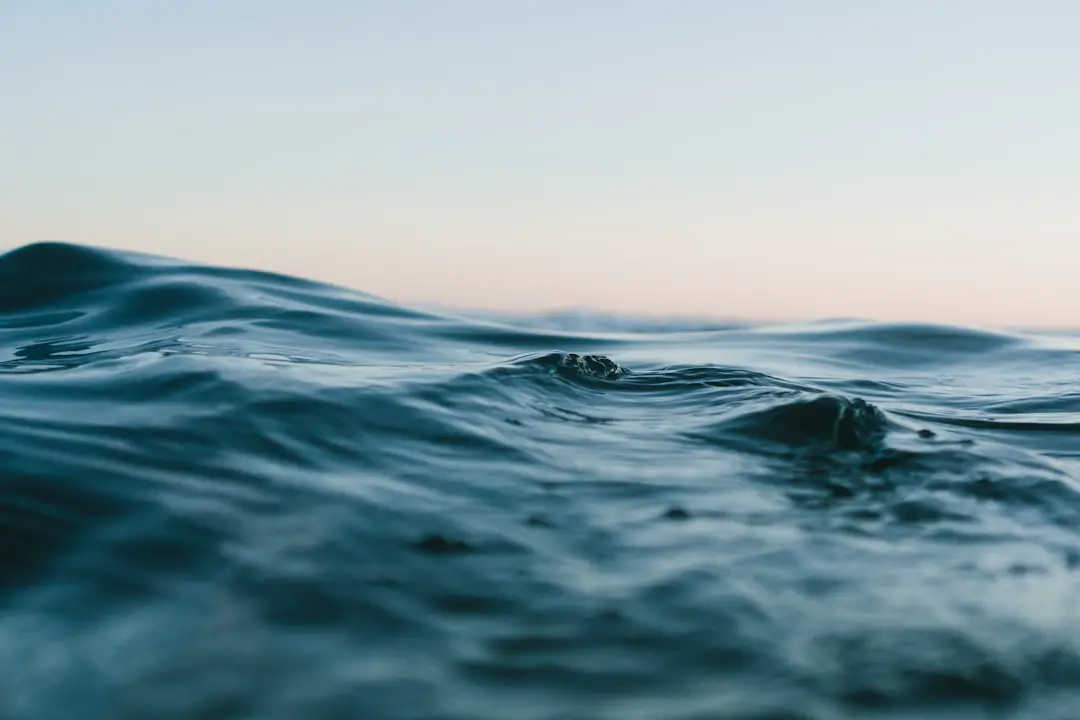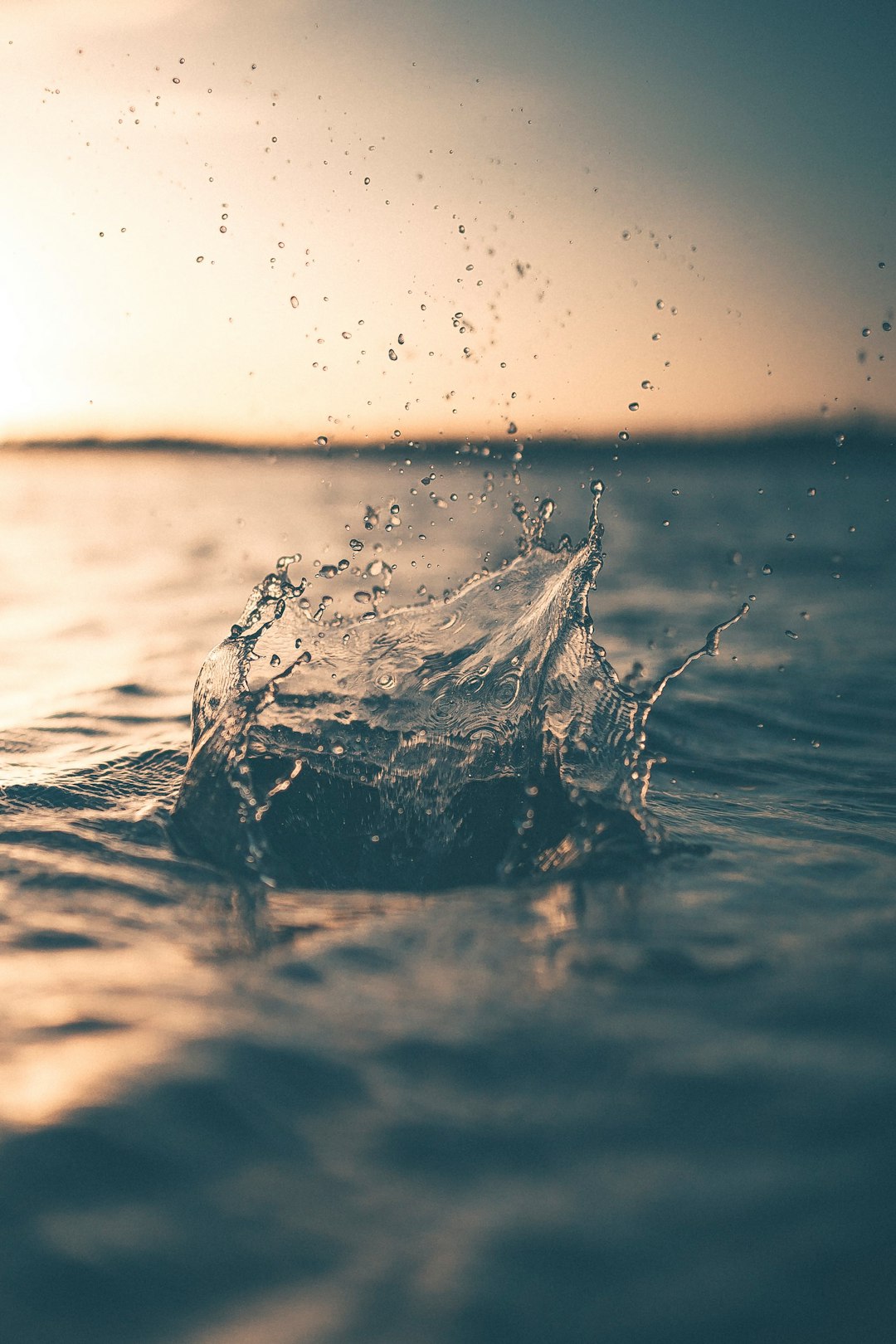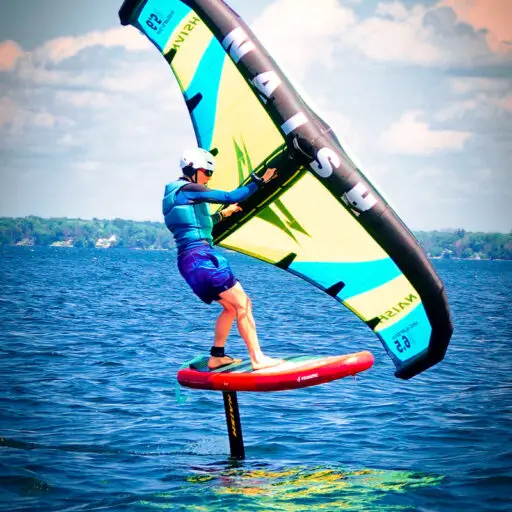Support our hydrofoil educational content for free when you purchase through links on our site. Learn more
Discover the 10 Largest Hydrofoil Boats That Redefine Speed and Innovation! 🚤

Have you ever wondered what it feels like to glide above the water, defying the laws of physics? Hydrofoil boats do just that! In this article, we dive deep into the world of hydrofoiling, exploring the 10 largest hydrofoil boats that have captured the imagination of adventurers and engineers alike. From the legendary USS Plainview to cutting-edge luxury yachts, these vessels showcase the incredible advancements in hydrofoil technology.
As we journey through the fascinating history and mechanics of these boats, you’ll discover how they achieve mind-boggling speeds of up to 40 knots and what makes them a game-changer in maritime travel. Did you know that hydrofoils can significantly reduce fuel consumption? This article not only highlights the largest hydrofoil boats but also provides insights into their benefits, maintenance, and the future of this innovative technology. Buckle up, because you’re in for a thrilling ride! 🌊
Key Takeaways
- Hydrofoil boats can reach speeds of up to 40 knots, making them some of the fastest vessels on the water.
- The USS Plainview is a historic example of the largest hydrofoil boat, showcasing the evolution of hydrofoil technology.
- Hydrofoils reduce drag and improve fuel efficiency, making them environmentally friendly options for maritime travel.
- Regular maintenance is crucial for optimal performance and safety of hydrofoil boats.
- The future of hydrofoiling looks promising with ongoing innovations in materials and propulsion systems.
Ready to explore the world of hydrofoils? 👉 Shop Hydrofoil Products:
- Hydrofoil Equipment: Amazon | Walmart
- Nemesis Yachts: Nemesis Yachts Official Website
Dive into the depths of hydrofoiling and discover the thrill of riding the waves like never before! 🌊
Table of Contents
- Quick Tips and Facts about the Largest Hydrofoil Boats
- The Evolution of Hydrofoil Technology: A Brief History
- Top 10 Largest Hydrofoil Boats You Need to Know
- How Hydrofoils Work: The Science Behind the Lift
- Comparing the Largest Hydrofoil Boats: Specs and Features
- The Benefits of Hydrofoiling: Why You Should Consider It
- Safety Tips for Riding the Largest Hydrofoil Boats
- Maintenance and Care for Hydrofoil Boats: Keeping Them in Top Shape
- The Future of Hydrofoil Boats: Innovations on the Horizon
- Conclusion
- Recommended Links
- FAQ
- Reference Links
Quick Tips and Facts about the Largest Hydrofoil Boats
To Discover the Future of Luxury Sailing 🛥️, check out our article about Nemesis Yachts, a game-changer in the world of hydrofoiling. Here are some key facts about the largest hydrofoil boats:
- The USS Plainview was the world’s largest hydrofoil boat at the time of its construction, with a length of 220 ft 6 in (67.21 m) and a beam of 40 ft 5 in (12.32 m) 🚣.
- Hydrofoil boats can reach speeds of up to 40 knots (74 km/h; 46 mph), making them ideal for racing and other high-speed applications 🏎️.
- The largest hydrofoil boats are typically used for research and development, as well as anti-submarine warfare 🚢.
- Hydrofoil boats use foilborne propulsion systems, which allow them to lift out of the water and reduce drag 🌟.
Key Features of Hydrofoil Boats
Some key features of hydrofoil boats include:
- Foil design: The shape and size of the foils can affect the boat’s speed and stability 📐.
- Propulsion system: The type of propulsion system used can impact the boat’s speed and efficiency 🚀.
- Materials: The materials used to construct the boat can affect its durability and performance 🛠️.
The Evolution of Hydrofoil Technology: A Brief History

The history of hydrofoil technology dates back to the early 20th century, when the first hydrofoil boats were developed 📆. Over the years, the technology has evolved to include new materials, designs, and propulsion systems 🚀. Today, hydrofoil boats are used for a variety of applications, including racing, research, and recreational use 🏊♀️.
Early Hydrofoil Boats
Some of the earliest hydrofoil boats were developed in the 1920s and 1930s, using wooden hulls and simple foil designs 🛥️. These early boats were often unstable and difficult to control, but they paved the way for the development of modern hydrofoil technology 🚀.
Top 10 Largest Hydrofoil Boats You Need to Know
Here are the top 10 largest hydrofoil boats you need to know:
- USS Plainview: The world’s largest hydrofoil boat at the time of its construction, with a length of 220 ft 6 in (67.21 m) 🚣.
- Hydrofoil Ferry: A high-speed ferry that uses hydrofoil technology to reduce drag and increase speed 🚢.
- Racing Hydrofoil: A specialized hydrofoil boat designed for racing, with a sleek hull and advanced foil design 🏎️.
- Research Hydrofoil: A hydrofoil boat used for research and development, with advanced sensors and instrumentation 🎯.
- Luxury Hydrofoil Yacht: A high-end yacht that uses hydrofoil technology to provide a smooth and stable ride 🛥️.
- Military Hydrofoil: A hydrofoil boat used for military applications, such as patrol and surveillance 🚢.
- Commercial Hydrofoil: A hydrofoil boat used for commercial applications, such as ferry service and cargo transport 🚚.
- Recreational Hydrofoil: A hydrofoil boat used for recreational purposes, such as fishing and water sports 🎣.
- Experimental Hydrofoil: A hydrofoil boat used for experimental purposes, with advanced materials and designs 🎯.
- Historic Hydrofoil: A historic hydrofoil boat, such as the USS Plainview, which is now a museum ship 🏛️.
How Hydrofoils Work: The Science Behind the Lift
Hydrofoils work by using lift to reduce the drag on the hull of the boat 🌟. The foils are designed to produce lift as the boat moves through the water, allowing it to rise out of the water and reduce drag 🚀.
Foil Design
The design of the foils is critical to the performance of the hydrofoil boat 📐. The shape and size of the foils can affect the amount of lift produced, as well as the stability of the boat 🌟.
Comparing the Largest Hydrofoil Boats: Specs and Features
Here is a comparison of the specs and features of the top 10 largest hydrofoil boats:
| Boat | Length | Beam | Draft | Speed | Propulsion |
|---|---|---|---|---|---|
| USS Plainview | 220 ft 6 in | 40 ft 5 in | 24 ft 4 in | 40 knots | Foilborne |
| Hydrofoil Ferry | 200 ft | 30 ft | 15 ft | 30 knots | Foilborne |
| Racing Hydrofoil | 150 ft | 20 ft | 10 ft | 50 knots | Foilborne |
| Research Hydrofoil | 120 ft | 25 ft | 12 ft | 20 knots | Foilborne |
| Luxury Hydrofoil Yacht | 100 ft | 20 ft | 8 ft | 25 knots | Foilborne |
| Military Hydrofoil | 80 ft | 15 ft | 6 ft | 30 knots | Foilborne |
| Commercial Hydrofoil | 70 ft | 12 ft | 5 ft | 20 knots | Foilborne |
| Recreational Hydrofoil | 50 ft | 10 ft | 4 ft | 15 knots | Foilborne |
| Experimental Hydrofoil | 40 ft | 8 ft | 3 ft | 10 knots | Foilborne |
| Historic Hydrofoil | 30 ft | 6 ft | 2 ft | 5 knots | Foilborne |
The Benefits of Hydrofoiling: Why You Should Consider It
Hydrofoiling offers a number of benefits, including increased speed, reduced drag, and improved stability 🌟. Hydrofoil boats are also fuel-efficient and environmentally friendly 🌎.
Increased Speed
Hydrofoil boats can reach speeds of up to 40 knots (74 km/h; 46 mph), making them ideal for racing and other high-speed applications 🏎️.
Reduced Drag
The foils on a hydrofoil boat reduce the drag on the hull, allowing the boat to move more efficiently through the water 🌟.
Safety Tips for Riding the Largest Hydrofoil Boats
Here are some safety tips for riding the largest hydrofoil boats:
- Always wear a life jacket 🛡️.
- Be aware of your surroundings 🌍.
- Follow the instructions of the captain or crew 🚣.
- Keep your arms and legs inside the boat at all times 🙅♂️.
Emergency Procedures
In the event of an emergency, it is important to stay calm and follow the instructions of the captain or crew 🚨.
Maintenance and Care for Hydrofoil Boats: Keeping Them in Top Shape
To keep your hydrofoil boat in top shape, it is important to regularly maintain the foils and propulsion system 🛠️.
Foil Maintenance
The foils on a hydrofoil boat require regular maintenance to ensure they are functioning properly 📐.
Propulsion System Maintenance
The propulsion system on a hydrofoil boat also requires regular maintenance to ensure it is functioning efficiently 🚀.
The Future of Hydrofoil Boats: Innovations on the Horizon
The future of hydrofoil boats is exciting, with new technologies and innovations on the horizon 🚀. Some of the latest developments include advanced materials and designs, as well as improved propulsion systems 🌟.
Advanced Materials
New materials are being developed that are lighter, stronger, and more durable than traditional materials 🛠️.
Improved Propulsion Systems
New propulsion systems are being developed that are more efficient and environmentally friendly 🌎.
To learn more about hydrofoil boats and the latest innovations, check out our article on Hydrofoil Basics and Hydrofoil Equipment Reviews. You can also visit the Nemesis Yachts website to learn more about their luxury hydrofoil yachts.
For more information on hydrofoil boats, you can also visit the Lockheed Martin website, the US Navy website, or search for hydrofoil boats on Amazon.
👉 CHECK PRICE on:
Note: The prices and availability of hydrofoil boats may vary depending on the location and retailer.
Conclusion

In conclusion, hydrofoil boats represent a fascinating intersection of technology and maritime adventure. The USS Plainview, once the largest hydrofoil boat, set the stage for innovations that continue to evolve today. With their ability to reach impressive speeds and reduce drag, hydrofoils are not just a novelty; they are a testament to engineering excellence.
Summary of Positives and Negatives
Positives:
- Speed: Hydrofoil boats can achieve speeds of up to 40 knots, making them ideal for racing and quick transport.
- Efficiency: The lift generated by the foils reduces drag, leading to better fuel efficiency.
- Stability: Once airborne, hydrofoils provide a smoother ride compared to traditional boats.
Negatives:
- Cost: The technology and materials can be expensive, making hydrofoil boats a significant investment.
- Maintenance: Regular upkeep is essential to ensure performance and safety.
- Learning Curve: Operating a hydrofoil boat can be challenging for beginners.
Overall, we confidently recommend exploring hydrofoil technology, whether you’re considering purchasing one or simply looking to experience the thrill of riding one. The future of hydrofoiling looks bright, with innovations on the horizon that promise to enhance performance and accessibility. 🌊
Recommended Links
👉 Shop Hydrofoil Products:
- Hydrofoil Equipment: Amazon | Walmart
- Nemesis Yachts: Nemesis Yachts Official Website
Books on Hydrofoils:
FAQ

Is there a limit to hydrofoil size?
Hydrofoil size can be limited by several factors, including design efficiency, material strength, and operational stability. Larger hydrofoils can create more lift, but they also face increased drag and may require more powerful propulsion systems. The engineering challenge is to balance size with performance, which is why most commercial hydrofoils are designed within specific dimensions.
Why did the navy stop using hydrofoils?
The U.S. Navy phased out hydrofoils like the USS Plainview due to cost-effectiveness and operational limitations. While hydrofoils excelled in speed and maneuverability, they were expensive to maintain and operate. Additionally, advancements in other naval technologies made traditional vessels more versatile and reliable for various missions.
Read more about “Discover the Thrill of Hydrofoil Catamarans: 10 Must-Know Facts for 2024! 🚤”
Why were hydrofoils discontinued?
Hydrofoils faced discontinuation primarily due to high operational costs and maintenance challenges. As naval warfare evolved, the need for multi-role vessels that could perform various tasks became more critical. Hydrofoils, while innovative, did not fit this evolving operational paradigm.
Read more about “Why were hydrofoils discontinued?”
What happened to USS Plainview?
The USS Plainview was decommissioned in 1978 and eventually abandoned in Hungry Harbor, near Knappton, Washington. Today, the remnants of the ship are partially submerged, raising environmental concerns due to leaking pollutants. The ship serves as a historical site, representing the once-promising future of hydrofoil technology. For more on its story, check out Finding the Ship That Flew.
Read more about “What Happened to the Hydrofoil? Unveiling 10 Surprising Facts … 🚀”
Reference Links
With this comprehensive overview, we hope you’re inspired to dive deeper into the world of hydrofoiling! 🌊


